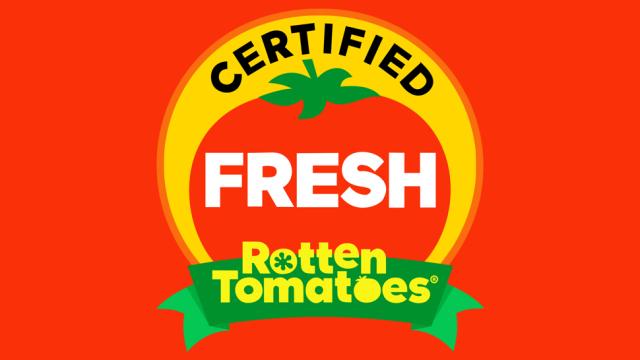Rotten Tomatoes has faced criticism from filmmakers and fans alike for the way its Tomatometer scale of ranking films as “Fresh” or “Rotten” skews audience expectations. Today, the critic review aggregator made some big changes to its scoring system and added a ton of new “Tomatometer-approved” critics to mix things up. We’re sure that this will anger somebody.
Last year, the Tomatometer received a round of scrutiny because film studios were complaining that the score was becoming so important to audiences that the site was killing their box office returns. Their argument was basically that Rotten Tomatoes ratings were based on snooty old film critics that are disconnected from audiences.
Subsequent data analysis showed that wasn’t entirely true, and Hollywood just has a problem with making quality movies. But the fact that top film critics do tend to be older white men working in a field that few people can make a living in has become increasingly apparent.
Researchers at the University of Southern California reported in June that only 22 per cent of Rotten Tomatoes professional film critics were female and only 18 per cent were from an underrepresented racial or ethnic background.
Rotten Tomatoes hopes its addition of 200 more critics today will make its selection of opinions less homogeneous. In the announcement it wrote:
In revamping our Critics Criteria, we sought to bring the criteria into better alignment with the way media works today, to promote the inclusion of more voices that reflect the varied groups of people who consume entertainment, and to maintain the high standards we’ve always set for inclusion in the group of Tomatometer-approved critics.
When assessing applications from those wishing to be a Tomatometer-approved critic, or a Tomatometer-approved publication, we now take into consideration four key values as well as a revised set of eligibility requirements. These values are Insight, Audience, Quality, and Dedication, and you can find a full breakdown of each value here.
The fact is, the professional gatekeepers at newspapers are going out of business, and they were always mostly white men anyway. Rotten Tomatoes said it’s also expanding the reviews it considers from strictly print to include podcast and video reviews as well.
In today’s media landscape, the site still runs a fairly analogue operation. Human beings evaluate whether a review is positive or negative and critics have been known to dispute their reviews’ characterisation from time to time. Now the aggregators will have to decide what videos and podcasts constitute a review and will need to wade through time-based media that’s more difficult to scan.
It’ll be a work in progress, but Rotten Tomatoes said it plans to make its job even tougher by adding “hundreds more as the year goes on”.
This change will likely bring in more critics with a populist outlook on film. That might upset the more academically-minded film snobs of the world, but will likely please fans who have a meltdown every time their favourite franchise gets a negative rating.
Of course, that same high-strung fandom tends to freak out at any mention of diversity and turn their personal prejudices into attacks on Rotten Tomatoes. No one will ever please these trolls.
